16 Wild Animals in Belize [Wildlife in Belize]
Want to know more about the wildlife in Belize?
Discover 16 wild animals in Belize in this post, as well as interesting facts about them. 🇧🇿
TABLE OF CONTENTS [show]
Learn All About Belizean Animals
Ready to learn all about Belizean animals?
I’ve always been fascinated by animals, and by how they can be so different from one country to another. In this guide, we’ll focus on the many animals Belize has on the land, in the sky, and underwater.
I’ve split the guide into 5 categories:
- Native animals of Belize
- Endangered animals of Belize
- What is Belize national animal?
- How many animals native to Belize?
- What is the largest animal in Belize?
Let’s dive in right away with our first category!
Native Animals of Belize
Belize is a Caribbean country located in Central America. Its population is growing by about 1.87 percent per year, which is one of the highest numbers in the Western Hemisphere. It is bordered by Mexico and Guatemala, and its capital city is Belmopan, which counts more than 16,000 inhabitants.
An interesting part of the country that I wanted to tackle is its wildlife. In light of that, I have listed the best of it, and I hope you will love learning what animals live in Belize.
Here’s the Belize animals list.
1. Jaguar
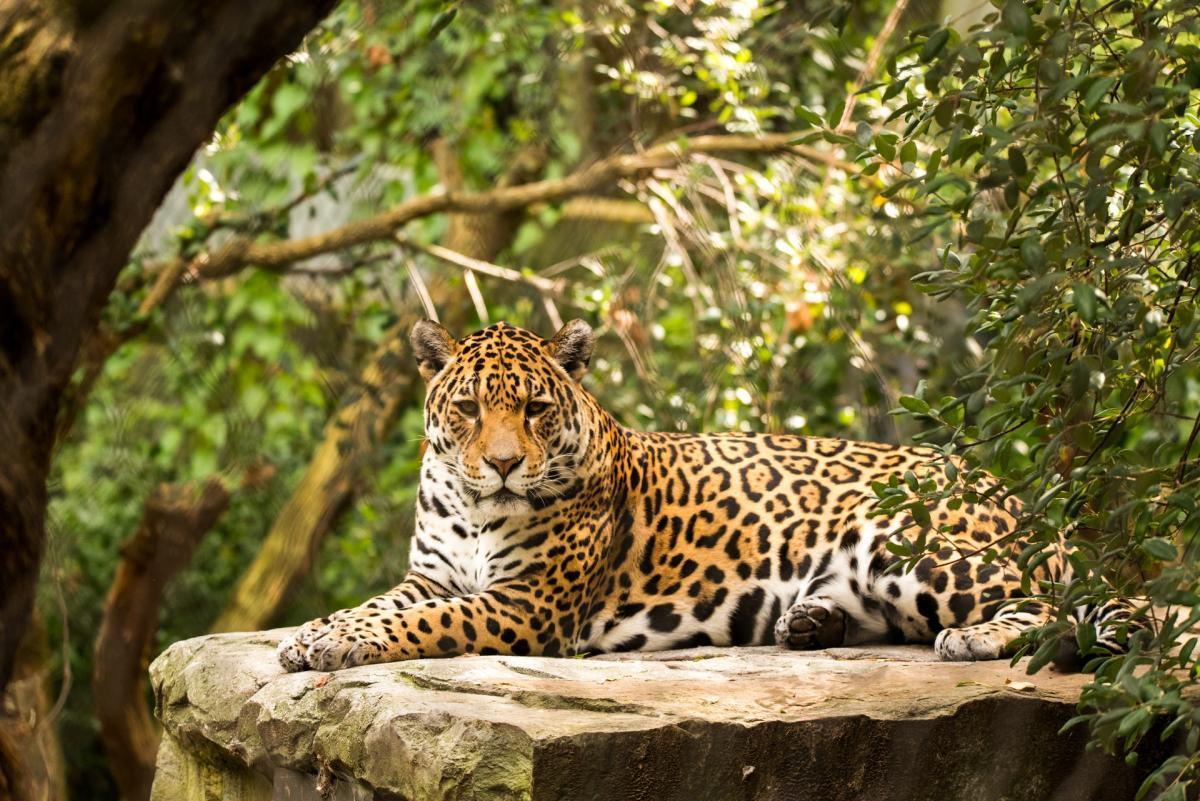
- Name: Jaguar
- Scientific name: Panthera onca
- Conservation status:
The jaguar is one of the most iconic animals from Central and South America’s jungles. It is a large panthera native to the Americas, and it can weigh up to 96 kg / 212 lb. It is the third largest cat species in the world and the largest one in the Americas.
Sadly, it is seriously threatened by habitat loss, poaching, and killing in human-animal conflicts. Ever since the end of the 1990s, its global population has been steadily decreasing, but more and more countries protect jaguars.
2. Margay
- Name: Margay
- Scientific name: Leopardus wiedii
- Conservation status:
The margay is yet another species of wild cat, but it is much smaller than the jaguar. It was illegally hunted a lot until the 1990s, and used in the wildlife trade. Because of this, its population has largely decreased. Now, its biggest threat is deforestation.
It is a nocturnal climbing animal that is often called the tree ocelot because of this. It hunts small mammals and monkeys, but also birds, lizards, tree frogs, and eggs. Sometimes, it eats grass and vegetation, most likely to help digestion.
3. Kinkajou
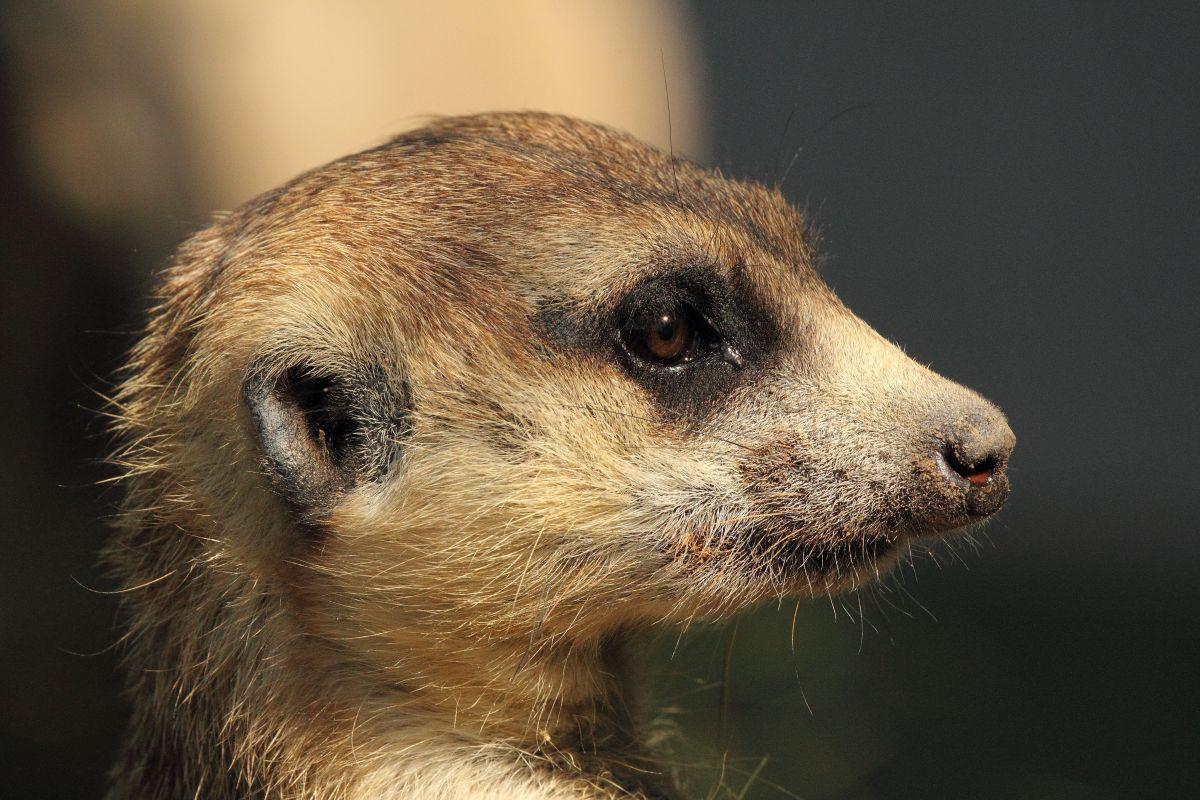
- Name: Kinkajou
- Scientific name: Potos flavus
- Conservation status:
You might have never heard of it, but the kinkajou is a tropical rainforest mammal related to raccoons and coatis. It is an arboreal animal native to Central and South America, and that can be found in Belize’s jungle.
Sometimes, it is kept as an exotic pet, as it is playful, docile and quiet, but it can be aggressive from time to time. The oldest recorded kinkajou was 41 years old, but their life expectancy is about 23 years (in captivity).
4. Lowland paca
- Name: Lowland paca
- Scientific name: Cuniculus paca
- Conservation status:
The lowland paca, also known as the spotted paca or the gibnut, is a large rodent native to Central and South America. It was introduced to Cuba and Algeria. In Belize, it is prized as a game animal, meaning it is hunted for its products, recreation, or for trophies.
Its name means “awaken” or “alert” in the Tupi language, and “mountain dog” in Nahuatl. It is a quiet, nocturnal and solitary animal.
5. Yucatan black howler
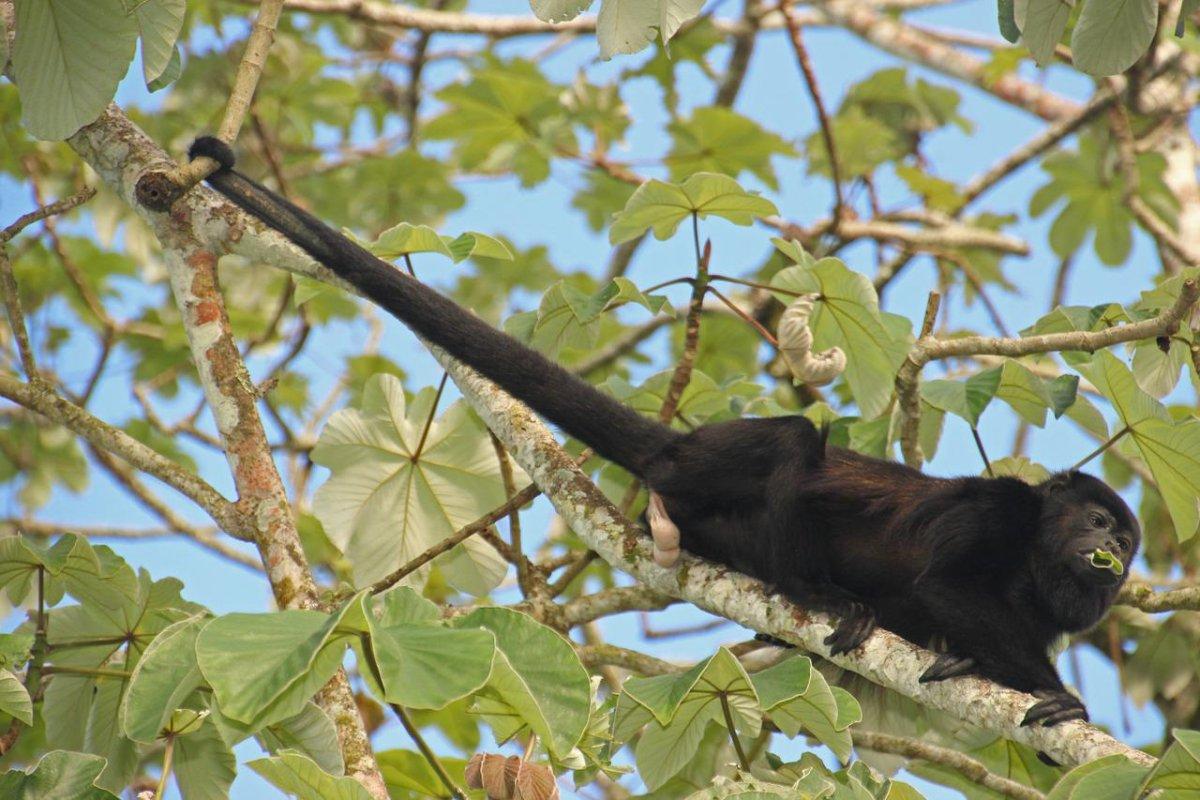
- Name: Yucatan black howler
- Scientific name: Alouatta pigra
- Conservation status:
The Yucatan black howler also named the Guatemalan black howler, is a species of the howler monkey. These types of monkeys are famous for their very loud howls that can be heard from several miles away. In Belize, it is known as the baboon, though it has nothing to do with African baboons.
It is currently considered endangered because its population is expected to decrease by up to 60 percent in the next decades. The Yucatan black howler is threatened by capture, hunting and habitat loss.
6. Ocelot
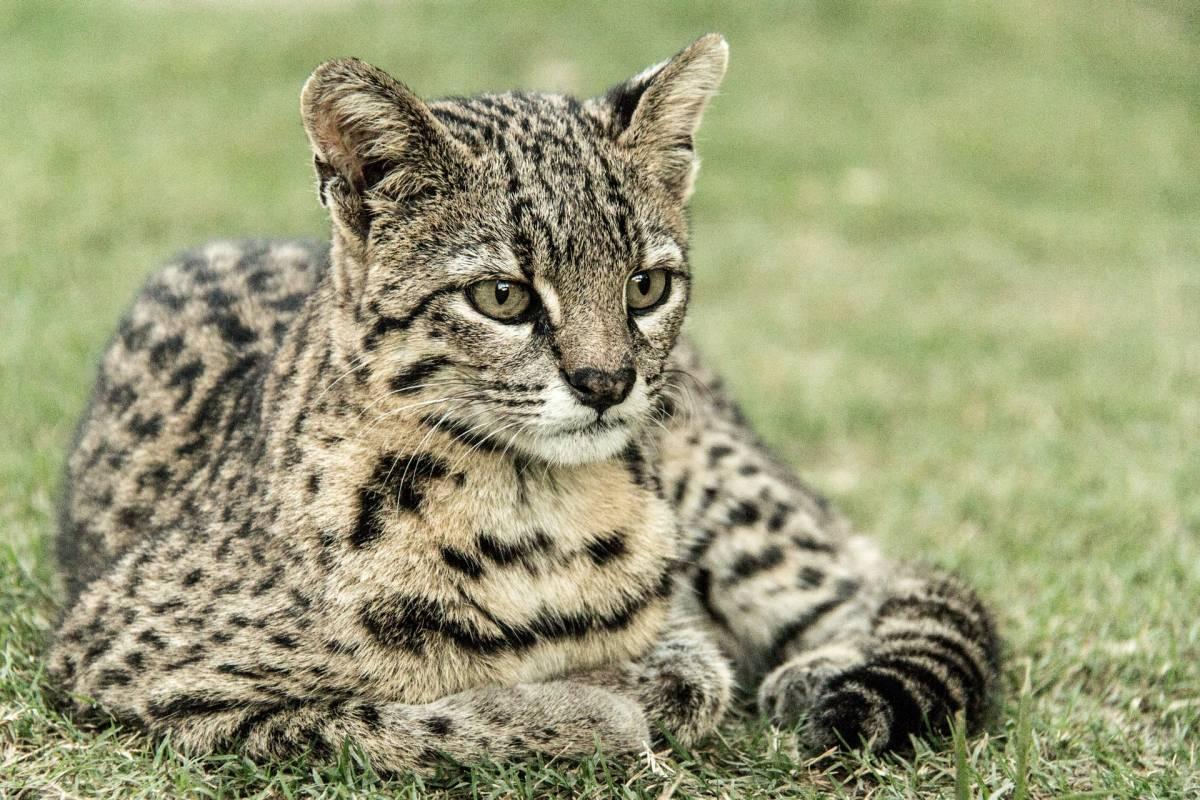
- Name: Ocelot
- Scientific name: Leopardus pardalis
- Conservation status:
The ocelot is a species of wild cat native to the southwestern parts of the United States, Mexico and Central and South America. It is medium-sized and it is active during twilight and at night.
The ocelot is territorial and solitary and is an excellent climber, leaper, and swimmer. Thanks to this, it preys on small mammals like opossums and armadillos. Even though it currently has a large population, it is threatened by hunting, traffic accidents, and habitat destruction.
7. White-nosed coati
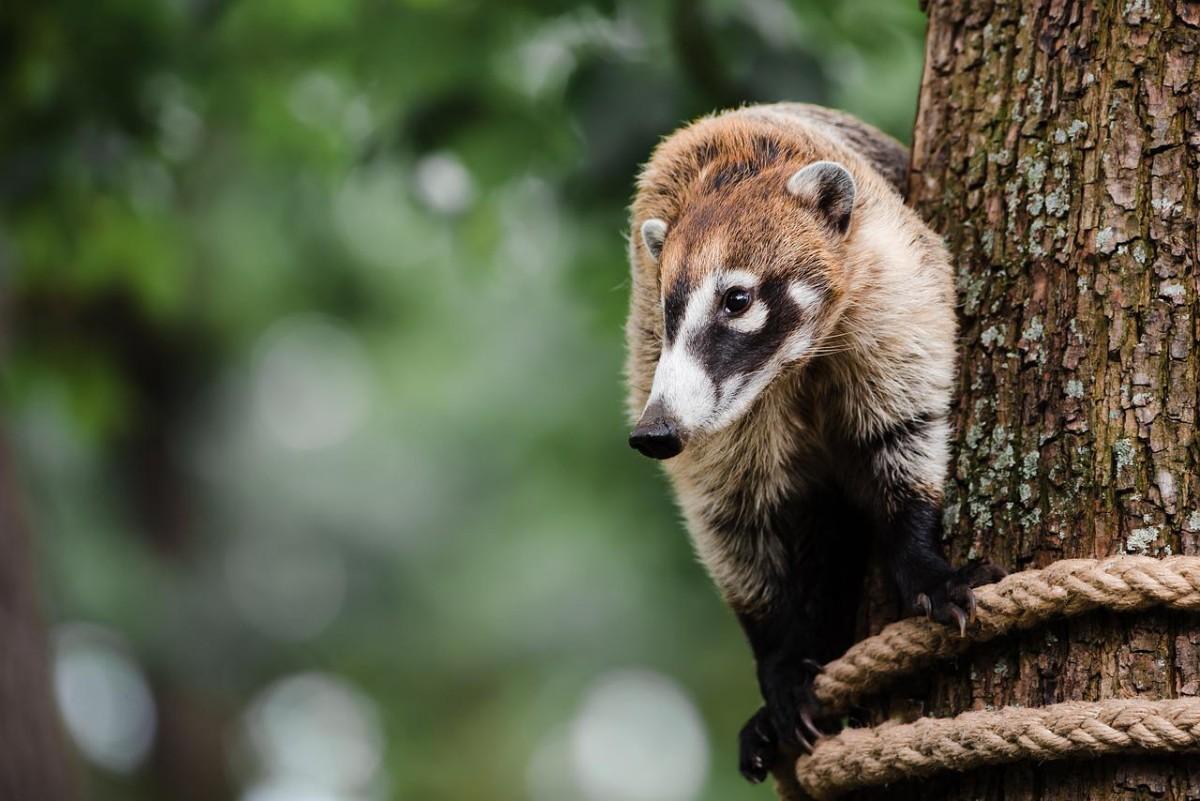
- Name: White-nosed coati
- Scientific name: Nasua narica
- Conservation status:
The white-nosed coati is a species of coati that inhabits most of Central America, from Arizona in the United States to Colombia. It was also introduced in Florida, no one really knows when.
White-nosed coatis are really useful for the pollination process. They often ingest nectar without damaging the flower, and their face is then covered in pollen, which they carry through the surrounding forest. They are omnivores that feed on small vertebrates, snakes, insects and fruits.
8. Terciopelo
- Name: Terciopelo
- Scientific name: Bothrops asper
- Conservation status:
Terciopelo, also known as Fer-de-Lance, is one of the largest species of pit vipers. It is highly venomous, and extremely dangerous, even though it usually avoids confrontation when possible. It is responsible for most snakebites in its range, and its venom can cause severe necrosis if not healed quickly. On top of this, it is also very large for a pit viper, and its fangs seriously hurt: this is why it earned its nickname of “the ultimate pit viper”.
9. Poison dart frog
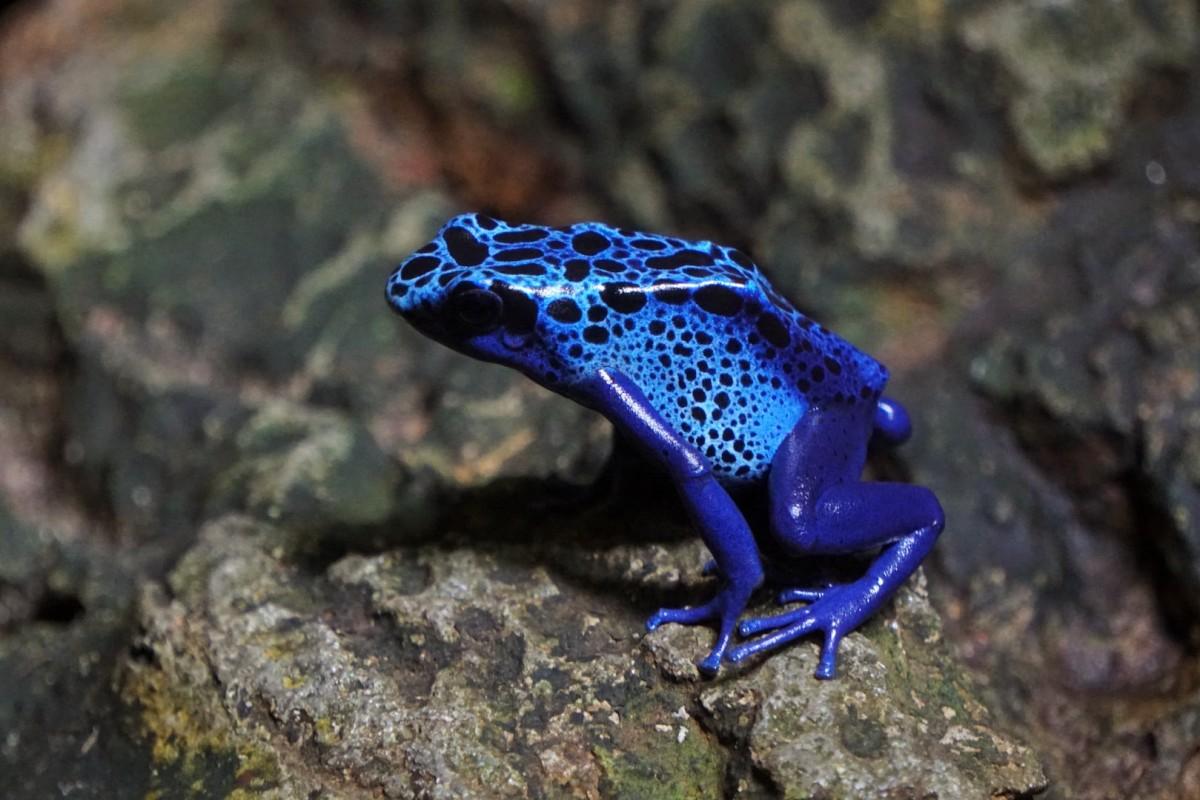
- Name: Poison dart frog
- Scientific name: Dendrobatidae (family)
- Conservation status:
Poison dart frogs, despite being spectacularly bright and beautiful, are some of the most dangerous animals in Belize. They are tiny but extremely poisonous, hence their colors which are used to deter any predator from attacking: this is called aposematism.
Their toxins are used in Native Americans’ blow darts. Do not worry though, they can only be found in very humid and tropical environments, most of the time rainforests. There are a ton of subspecies, but most of them can be found throughout Central and South America.
10. American crocodile
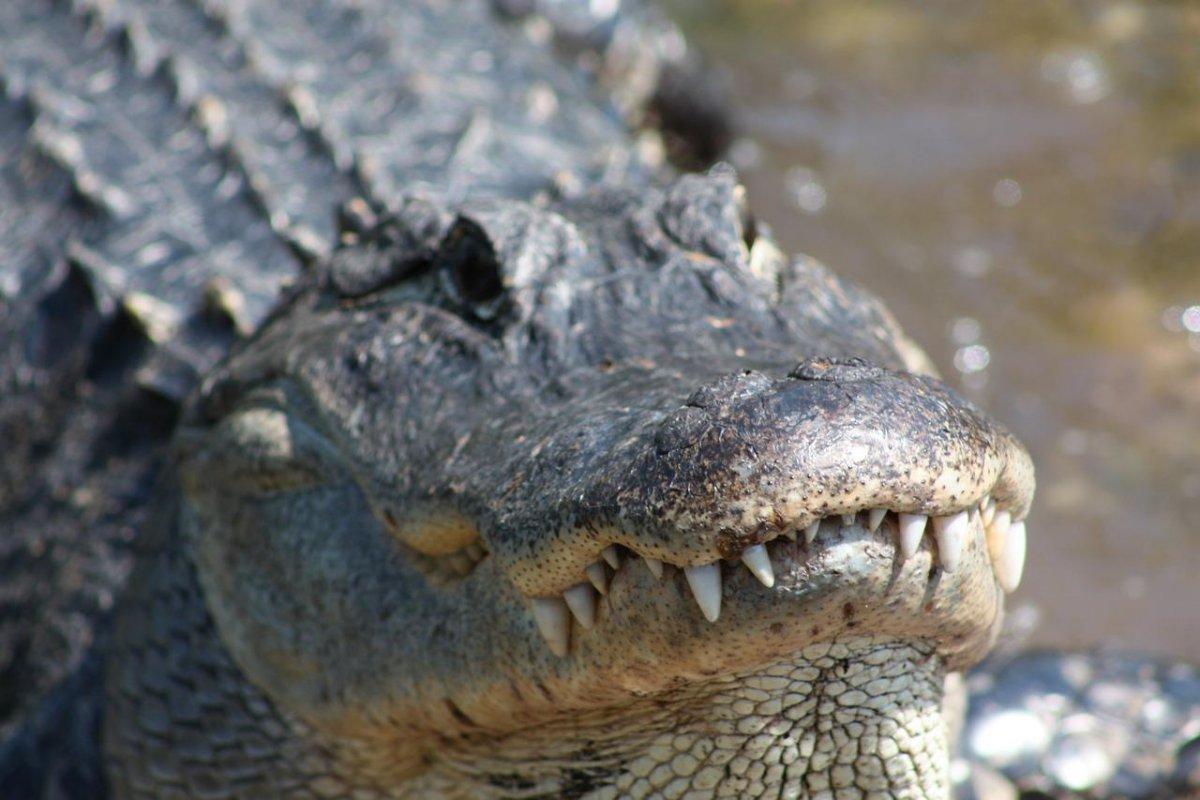
- Name: American crocodile
- Scientific name: Crocodylus acutus
- Conservation status:
Crocodiles are some of the most emblematic large wild animals on the planet. The American crocodile is a species of crocodile that largely inhabits coastal areas of Central America. Its favorite habitats are mangrove swamps, lagoons and small islands.
It is one of the largest crocodile species, as it can reach up to 6.1 m / 20 ft and weigh up to 907 kg / 2,000 lb! It can be very dangerous to humans if disturbed but is not as aggressive as other species. It is threatened by pollution and hunting.
11. Geoffroy’s spider monkey
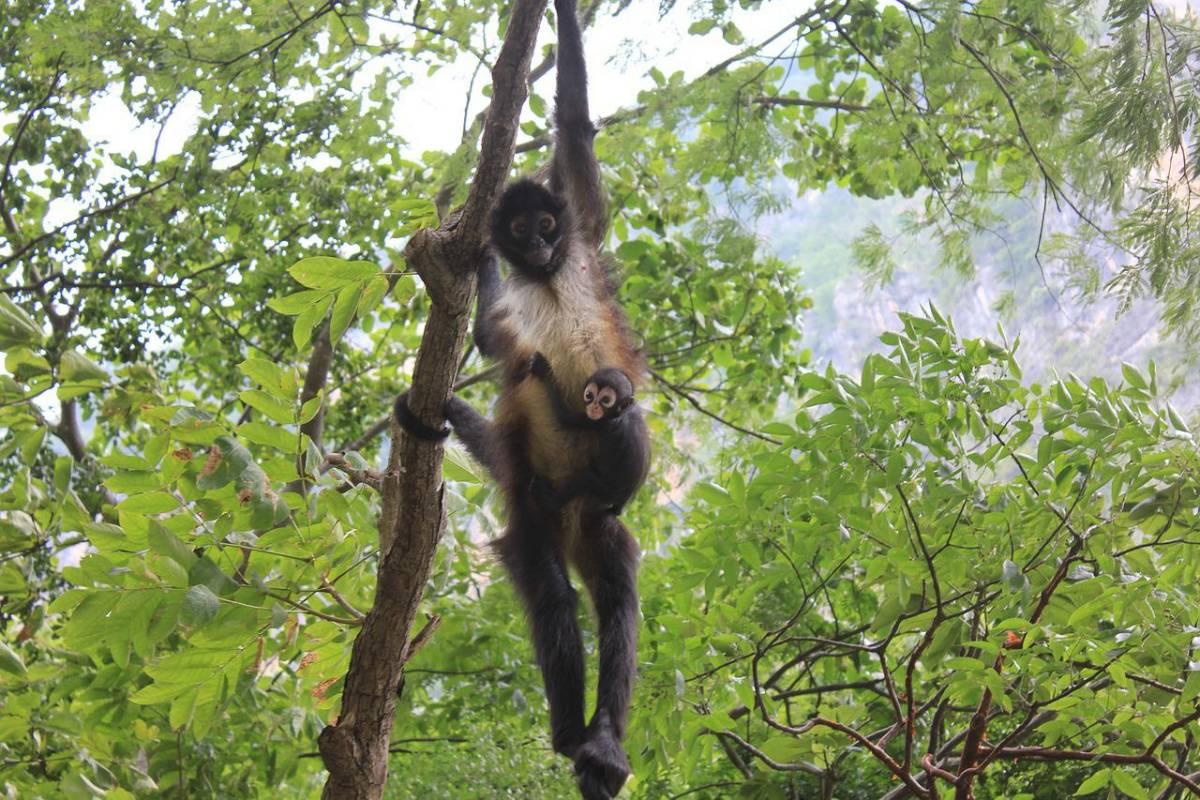
- Name: Geoffroy’s spider monkey
- Scientific name: Ateles geoffroyi
- Conservation status:
Geoffroy’s spider monkey, also named Central American spider monkey or black-handed spider monkey, is a species of monkey native to Central America. It is one of the largest monkeys of its range, most of the time weighing around 9 kg / 20 lb.
It uses its prehensile tail as an extra limb, and its tail can support its entire body weight. It is attacked by jaguars and pumas, but also by humans, eagles, and large snakes.
12. Hickatee
- Name: Hickatee
- Scientific name: Dermatemys mawii
- Conservation status:
The Central American river turtle, or hickatee, is the only living species in its family. It inhabits Atlantic drainages in Belize, Guatemala, Honduras and southern Mexico. It is an almost completely aquatic species of turtle that barely surfaces, and it is herbivorous.
Interestingly enough, it is one of the few reptile species that keeps its eggs underwater, and they remain viable. In the Ancient Mayan civilization, this turtle was used for warfare, instruments, and food. Now, it is threatened by heavy exploitation, overhunting, and pollution.
13. West Indian manatee
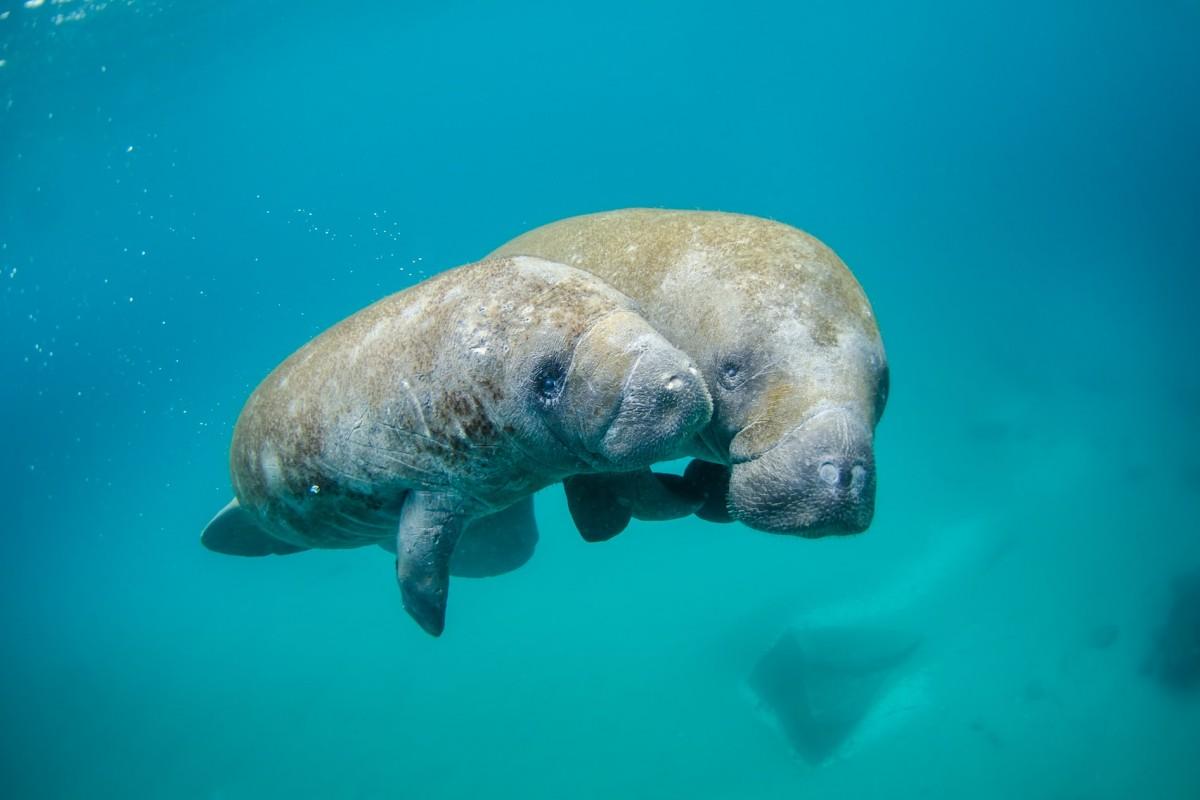
- Name: West Indian manatee
- Scientific name: Trichechus manatus
- Conservation status:
The West Indian manatee also named the North American manatee, is the largest living member of its family. It is divided into two subspecies, the Florida manatee and the Caribbean manatee, and is overall considered vulnerable, but depending on the species it can be listed as endangered.
It feeds on more than 60 species of aquatic plants, most notoriously on seagrass, in coastal areas. It has highly sensitive hairs all around its body and face which are very useful to be aware of its environment and detecting hydrodynamic stimuli.
14. Scarlet macaw
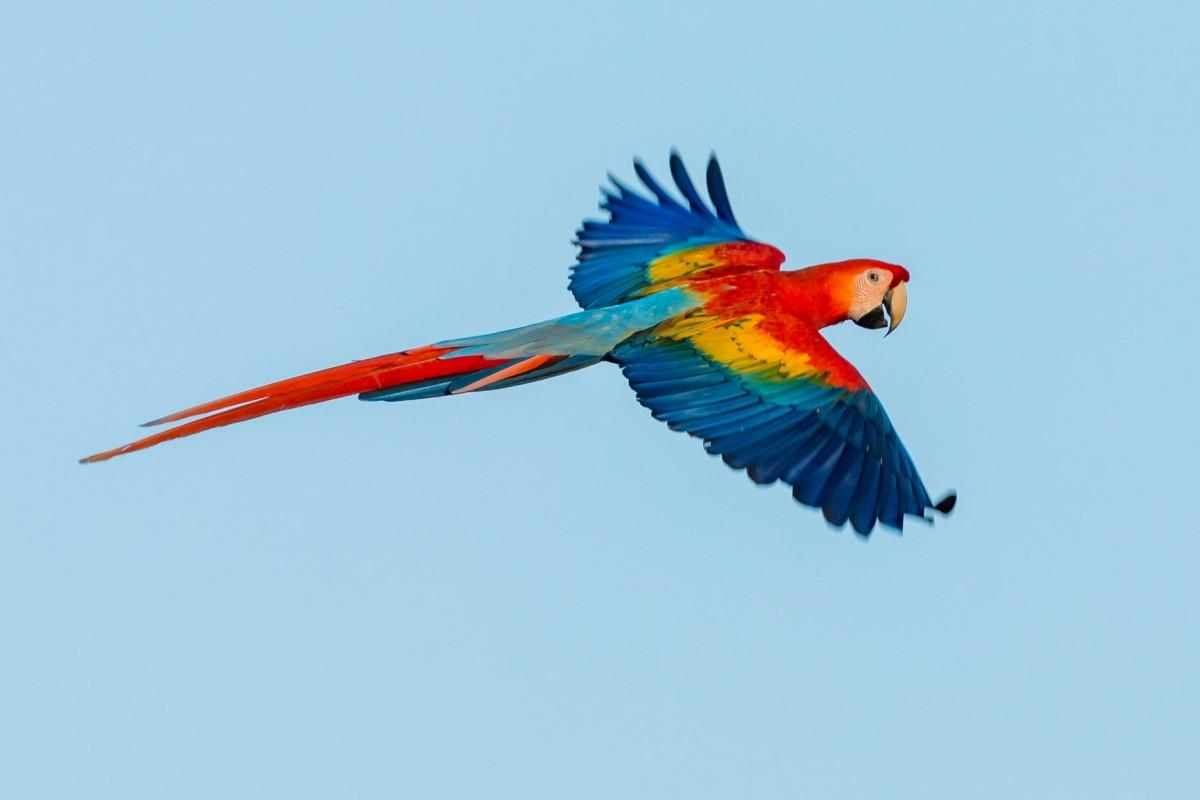
- Name: Scarlet macaw
- Scientific name: Ara macao
- Conservation status:
The scarlet macaw is a famously large red, blue and yellow parrot native to Central and South America. It inhabits evergreen forests from southern Mexico to western Brazil, but it suffers from local extinction in several areas. Despite this, its global population remains quite stable, and it is of least concern.
This macaw is the national bird of Honduras, but can also be found in Belize. Believe it or not, captivity has greatly helped scarlet macaws, as many of their babies die in their nests in the wild.
15. Northern banana salamander
- Name: Northern banana salamander
- Scientific name: Bolitoglossa rufescens
- Conservation status:
The northern banana salamander, also known as the rufescent salamander or common dwarf salamander is a species of salamander that inhabits Central America. It is small, terrestrial, and arboreal, and loves tropical moist lowland rain forests as well as mountainous areas.
Its diet mostly consists of small invertebrates it can find on forest floors, but it changes a lot depending on the habitat and size of the animal. Its major threat is snakes and responds to them by elevating its tail in hopes to scare them.
16. Jaguarundi
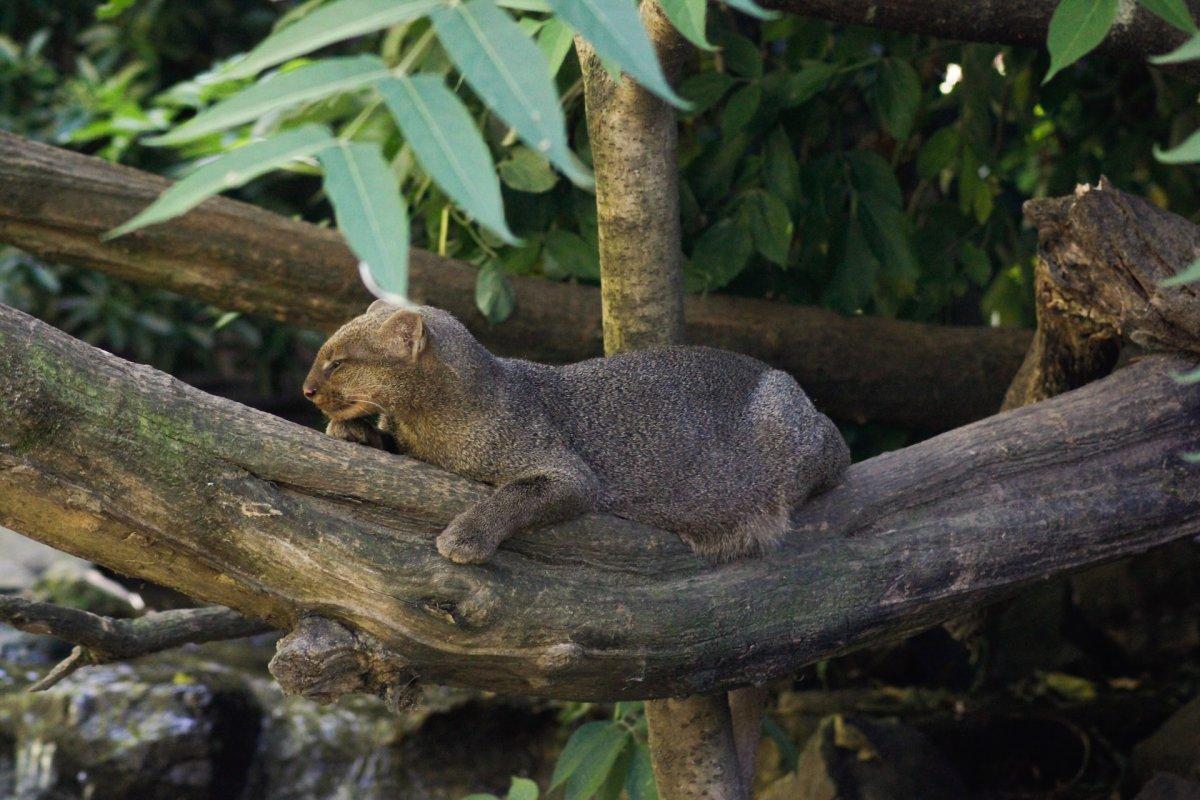
- Name: Jaguarundi
- Scientific name: Herpailurus yagouaroundi
- Conservation status:
Let us end this list the way we started it, with a wild cat that starts with “jaguar”. The Jaguarundi is a medium-sized wild cat species native to Central and South America. It inhabits many different areas, including tropical rainforests, thorn scrubs and deserts. It is locally extinct in the United States but fairly common in Brazil and Venezuela.
It is a shy and reclusive animal, very cautious of traps. Its gray color gives it great camouflage.
—
So there you have it, my list of animals in Belize. I hope you enjoyed this list and that you learned something new today.
In case you want to learn more about animals in the country, feel free to keep reading, as I still have lots of things to tell you about:
Endangered Animals of Belize
This is definitely the saddest part of the list, but it is very important to raise awareness. Because of this, let’s go through the list of endangered animals in Belize.
Here are the animals in danger of extinction in Belize.
- Caribbean monk seal
- Largetooth sawfish
- Smalltooth sawfish
- Oceanic whitetip shark
- Nassau grouper
- Wingfin stingray
- and 5 more…
- Splendid toadfish
- Social wrasse
- Basking shark
- Yucatán black howler monkey
- Atlantic chupare
- and 28 more…
To see the full list of endangered species in Belize, head over to the International Union for Conservation of Nature’s Red List.
What is the National Animal of Belize?
The national animal of Belize is the Baird’s Tapir.
The Baird’s tapir, also known as the Central American tapir, is a species of tapir native to Central and South America. It is the largest native land mammal in both Central and South America, and it was named after American naturalist Spencer Fullerton Baird, who first observed it in 1843.
These tapirs are not dangerous to humans, as they only defend themselves, and rarely attack, even though it is possible. Therefore, it should not be approached in the wild.
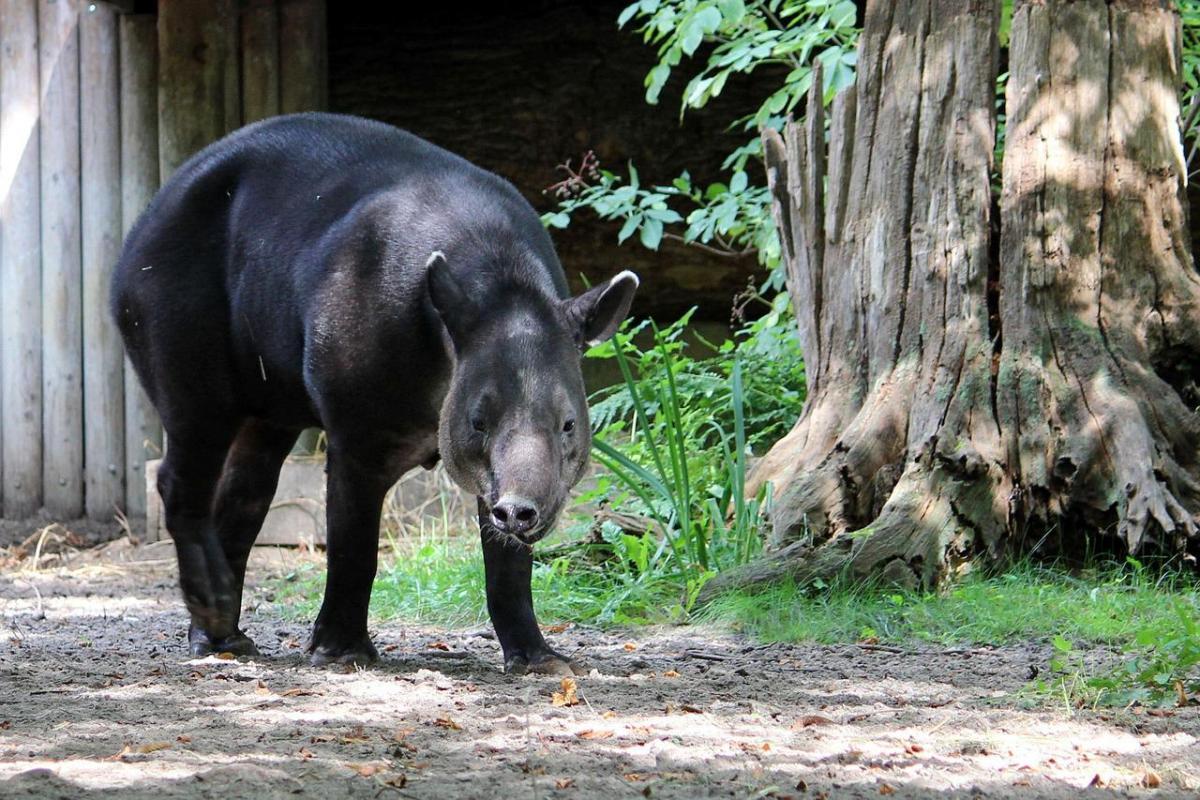
How Many Animals Native to Belize?
What is the diversity of native animals in Belize?
Let’s look at the total number of species of Chordata (mammals, birds, fishes and reptiles).
Total number of animal species in Belize: 2,187 (8,028 in total in Mesoamerica)
What is the largest animal in Belize?
The largest animal in Belize is also the country’s national animal, the Baird’s tapir!
It looks like a pig, but it is actually related to horses and rhinoceroses, and they are called “mountain cows” in Belize. It inhabits forests and grasslands, and it is protected by law. The Baird’s tapir is easily recognizable thanks to its short prehensile gripping trunk. It is a herbivore and even though adults have brown to black fur, their offspring are white-striped.
More About Animals in the World!
Loved these Belize wildlife facts? Want to see what animals live in other countries?
Then check out these posts:
Or click here to see ALL the facts up on the blog! Spoiler alert: there’s A LOT of them.
Share the knowledge! Click on the buttons below to share information about these famous animals in Belize with your friends, and help them learn more about the world 🙂
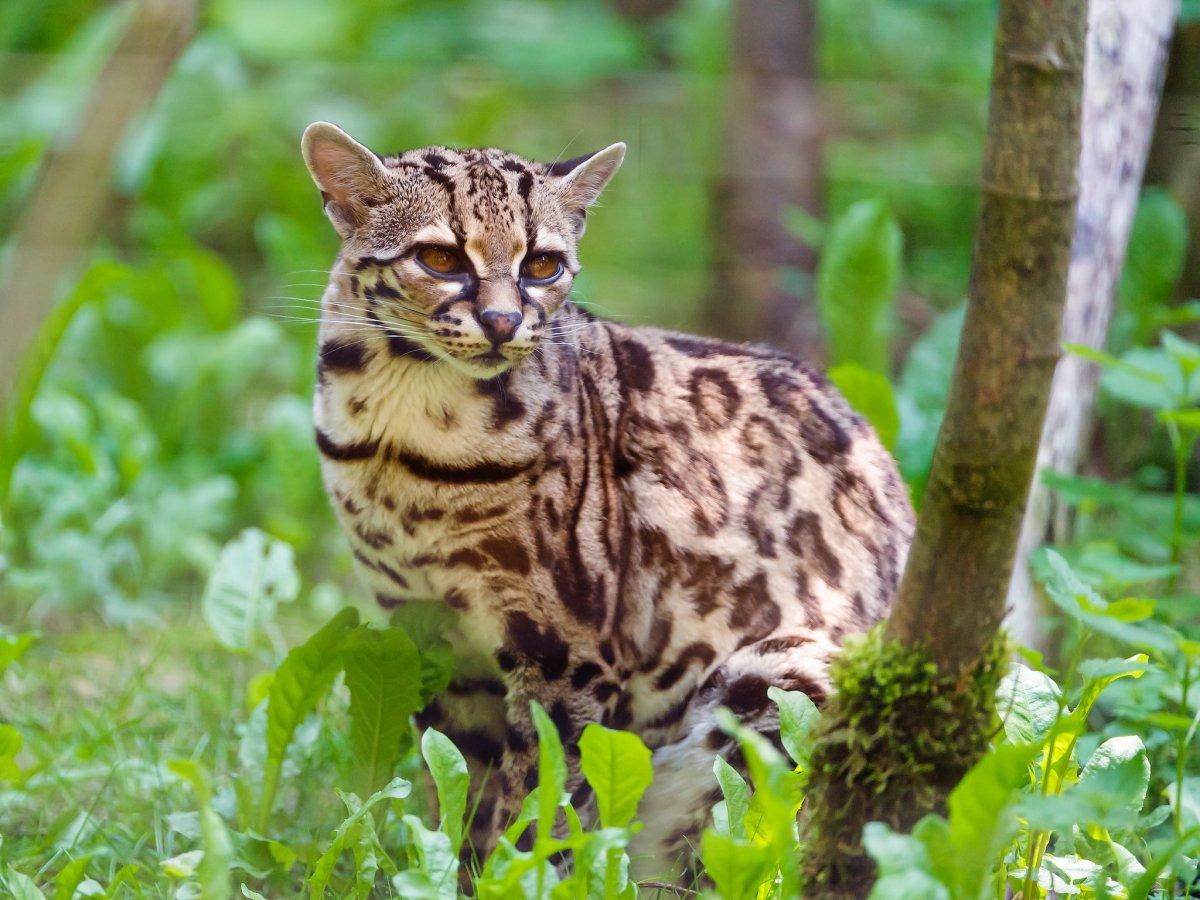
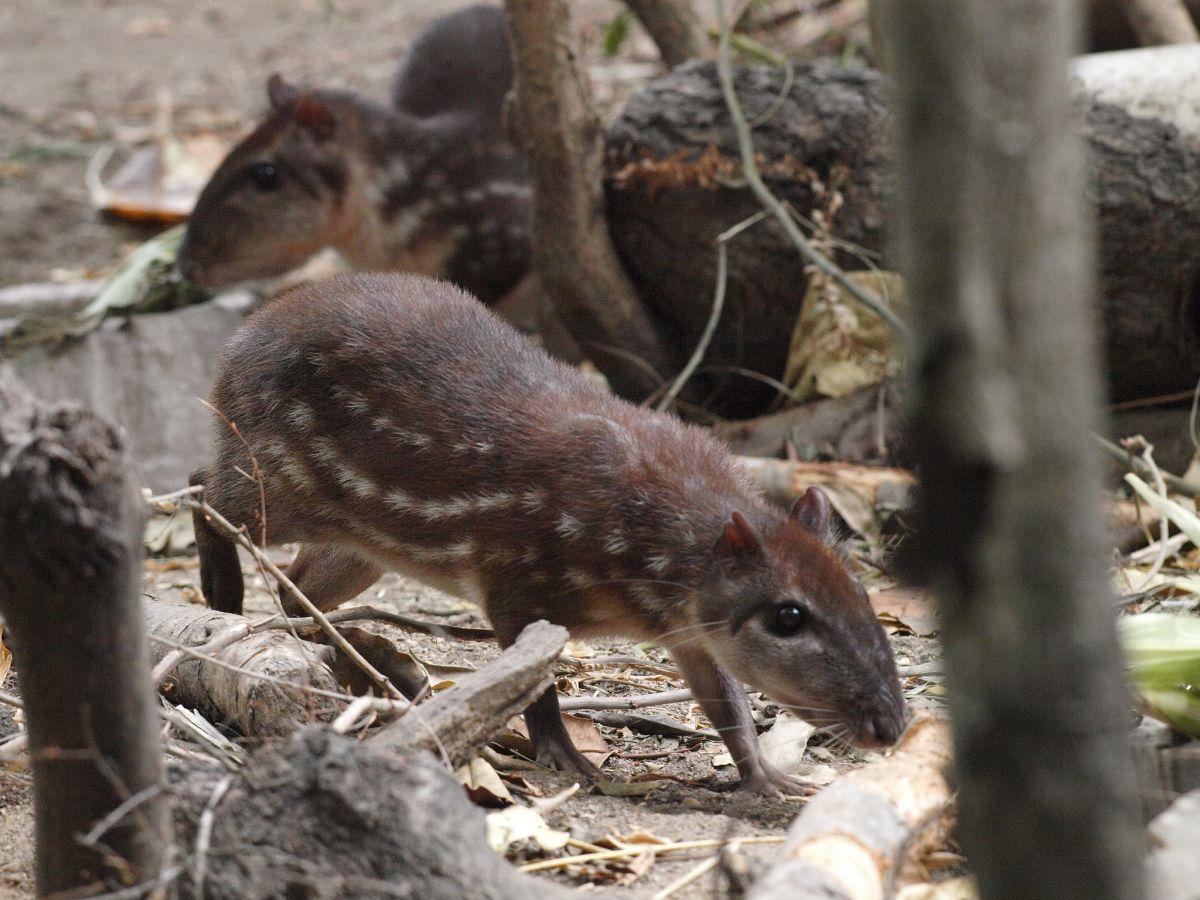
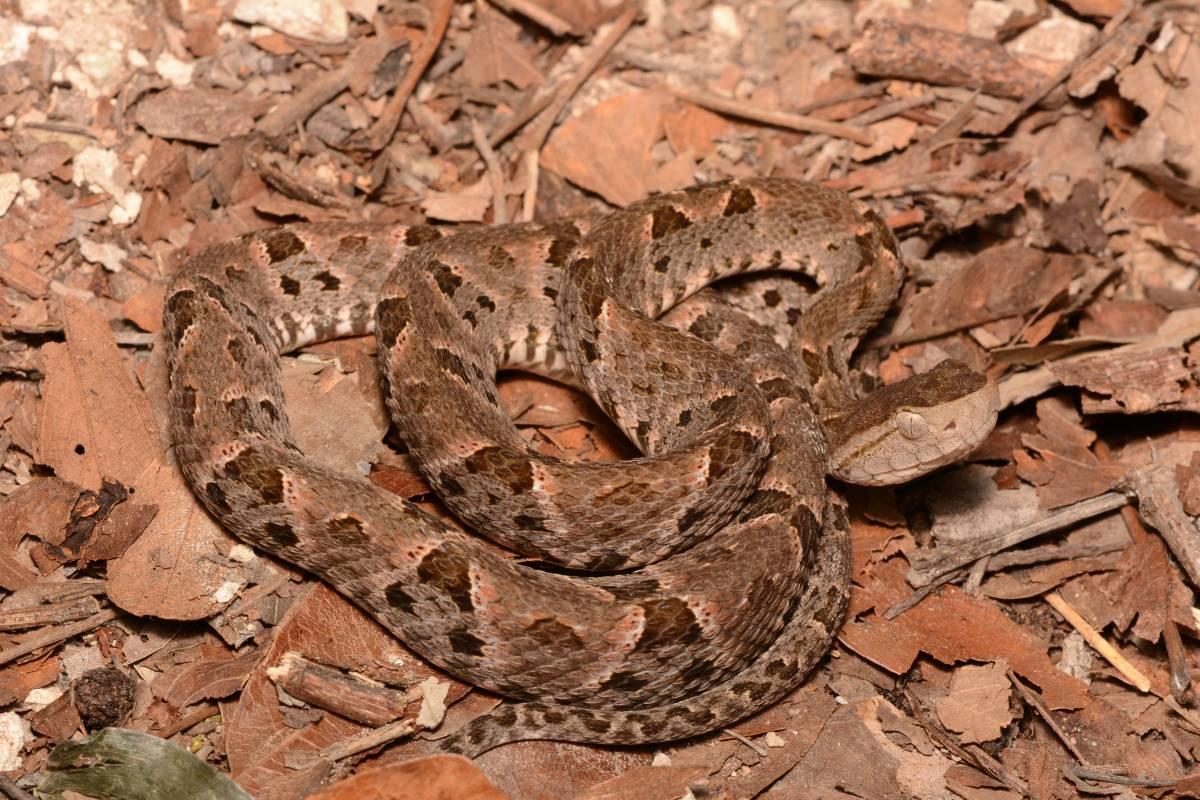
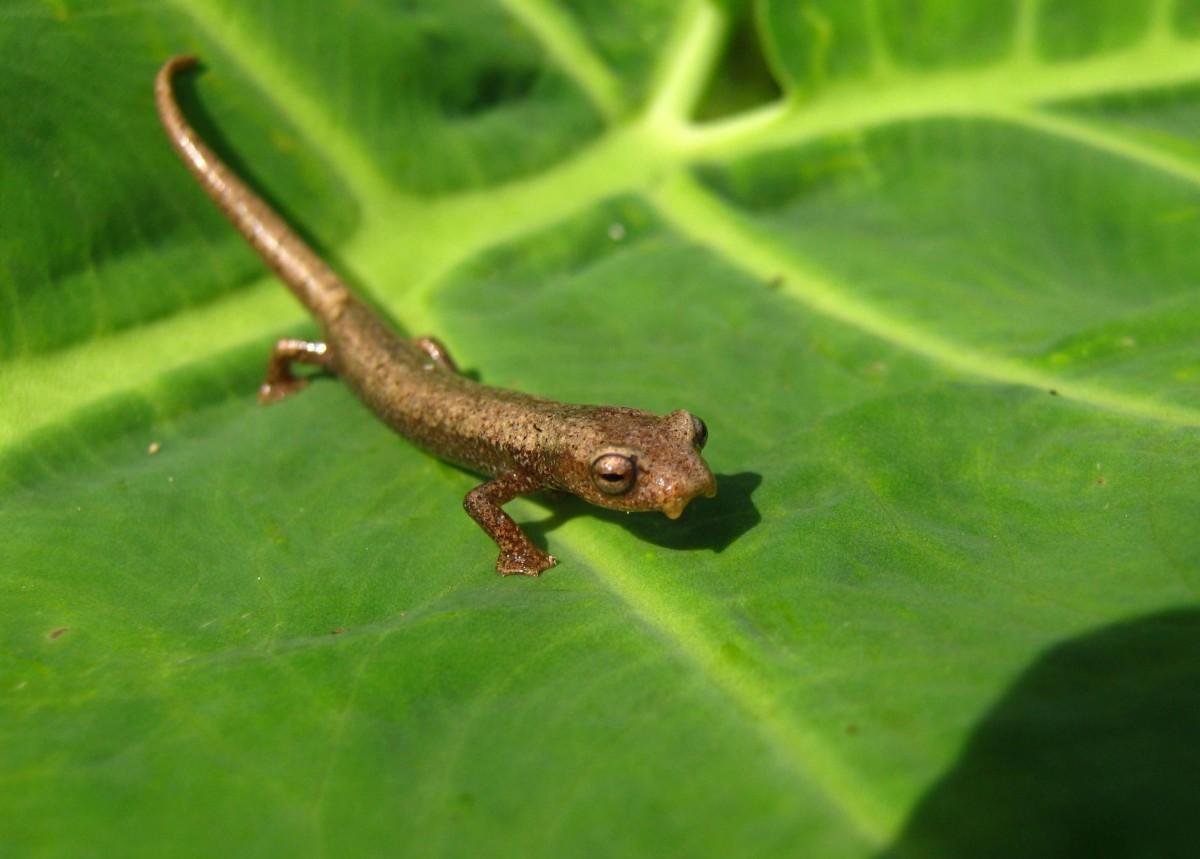

![24 Wild Animals in Guyana [Wildlife in Guyana]](https://www.kevmrc.com/wp-content/uploads/2022/08/24-wild-animals-in-guyana.jpg)
![27 Wild Animals in Papua New Guinea [Wildlife in Papua New Guinea]](https://www.kevmrc.com/wp-content/uploads/2023/01/27-wild-animals-in-papua-new-guinea.jpg)
![19 Wild Animals in Queensland [Wildlife in Queensland]](https://www.kevmrc.com/wp-content/uploads/2023/01/19-wild-animals-in-queensland-australia.jpg)
Hello, may I point out that your photo labelled kinkajou is actually a meerkat.